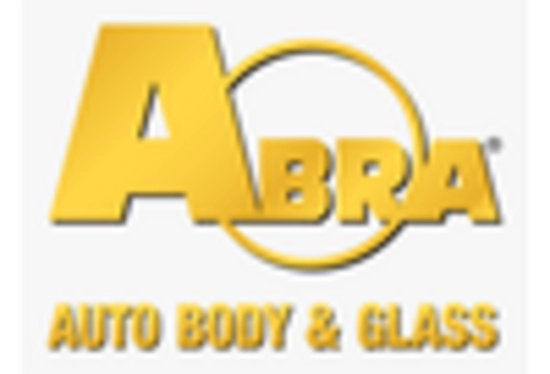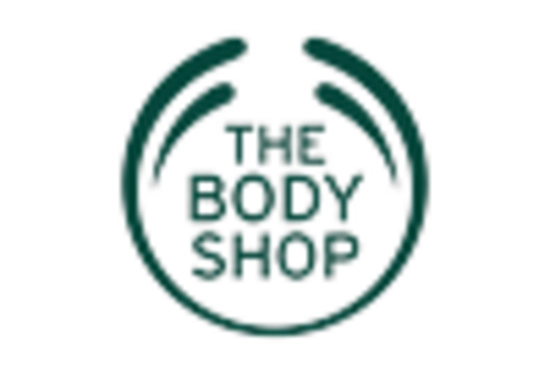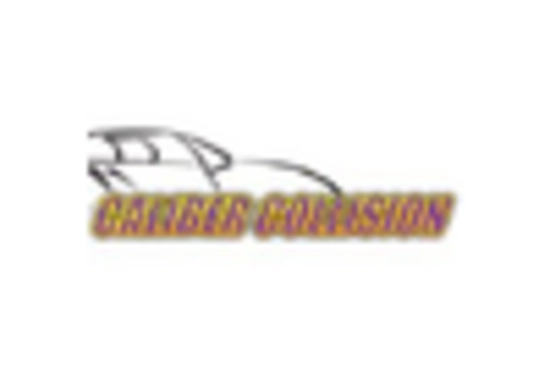Increasing Vehicle Ownership
The rise in vehicle ownership is a pivotal driver for the Automotive Collision Repair Market. As more individuals acquire vehicles, the likelihood of accidents and subsequent repairs increases. Recent data indicates that vehicle ownership rates have surged, with estimates suggesting that there are over 1.4 billion cars on the roads. This growing number of vehicles directly correlates with a heightened demand for collision repair services. Furthermore, the increasing complexity of modern vehicles, equipped with advanced safety features, necessitates specialized repair services, thereby expanding the market. The Automotive Collision Repair Market is thus poised for growth as vehicle ownership continues to rise, leading to a sustained need for repair services.
Regulatory Compliance and Safety Standards
Regulatory compliance and safety standards play a crucial role in shaping the Automotive Collision Repair Market. Governments worldwide are increasingly enforcing stringent safety regulations for vehicles, which necessitates that repair shops adhere to specific standards. This compliance ensures that repaired vehicles meet safety requirements, thereby protecting consumers and enhancing the credibility of repair services. Moreover, the implementation of environmental regulations regarding waste disposal and emissions from repair processes compels repair facilities to adopt sustainable practices. As a result, repair shops that prioritize compliance are likely to gain a competitive edge, contributing to the overall growth of the Automotive Collision Repair Market.
Consumer Preference for Professional Repairs
Consumer preference for professional repairs over DIY solutions is a significant driver in the Automotive Collision Repair Market. As vehicles become more technologically advanced, many consumers recognize the limitations of DIY repairs and the potential risks involved. This shift in consumer behavior is evident in the increasing number of individuals seeking professional services for collision repairs. Market data indicates that a substantial percentage of consumers prefer to rely on certified technicians for repairs, valuing expertise and quality assurance. This trend not only enhances the reputation of professional repair shops but also contributes to the growth of the Automotive Collision Repair Market, as more consumers choose to invest in reliable repair services.
Rising Insurance Claims for Collision Repairs
The increase in insurance claims for collision repairs significantly influences the Automotive Collision Repair Market. As more drivers opt for comprehensive insurance coverage, the frequency of claims related to vehicle accidents rises. Data suggests that insurance claims for collision repairs have been on an upward trajectory, reflecting a growing awareness among consumers about the importance of coverage. This trend not only drives demand for repair services but also encourages insurance companies to partner with repair shops, creating a network that facilitates smoother claims processing. Consequently, the Automotive Collision Repair Market benefits from this synergy, as more claims translate into increased business for repair facilities.
Technological Innovations in Repair Techniques
Technological advancements in repair techniques are transforming the Automotive Collision Repair Market. Innovations such as advanced materials, automated repair systems, and sophisticated diagnostic tools enhance repair efficiency and effectiveness. For instance, the adoption of aluminum and composite materials in vehicle manufacturing requires specialized repair methods, which drives demand for skilled technicians and advanced equipment. Additionally, the integration of artificial intelligence in estimating repair costs and managing workflows streamlines operations, potentially reducing turnaround times. As these technologies become more prevalent, they are likely to attract more consumers to professional repair services, thereby bolstering the Automotive Collision Repair Market.


















Leave a Comment